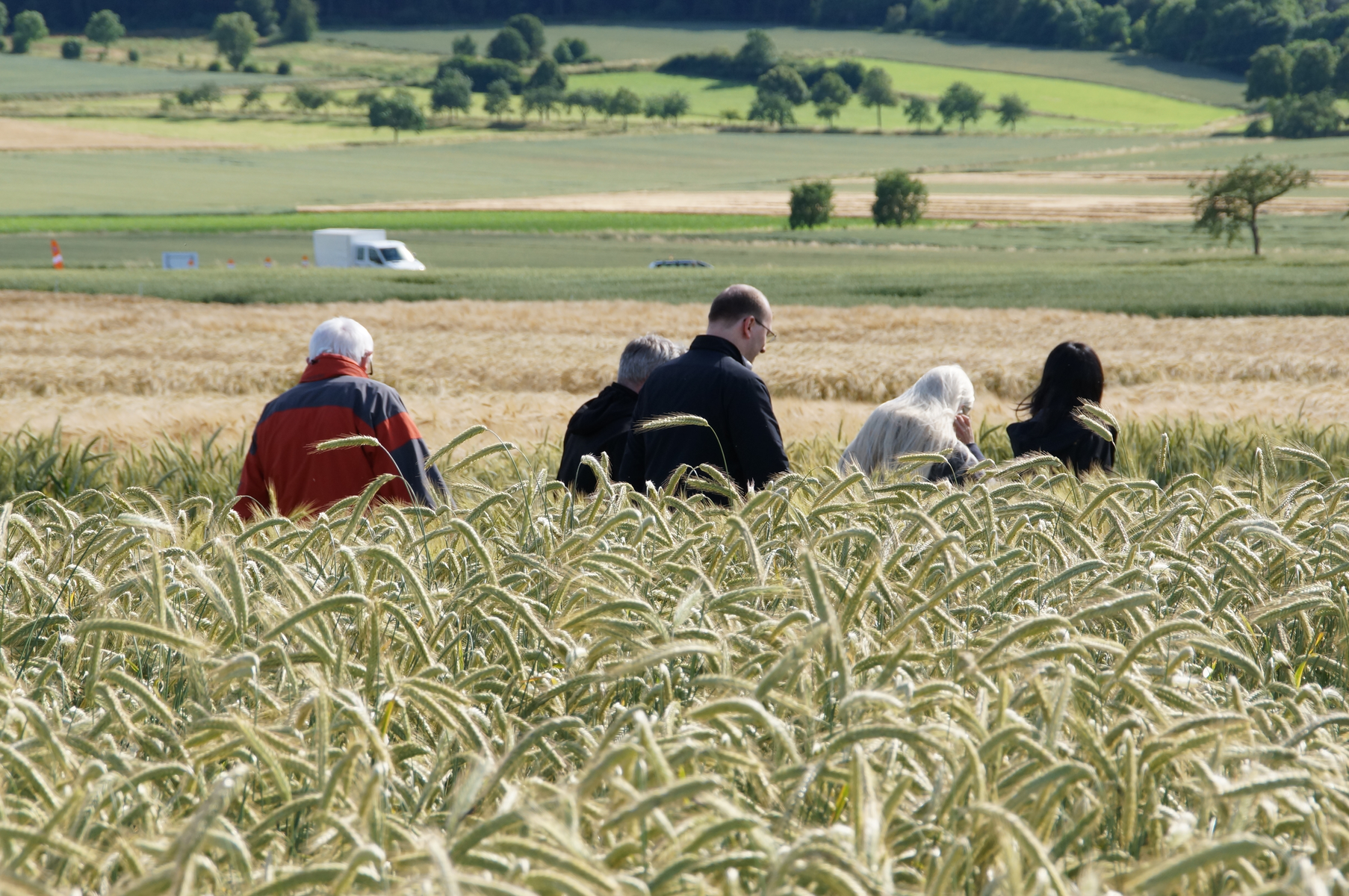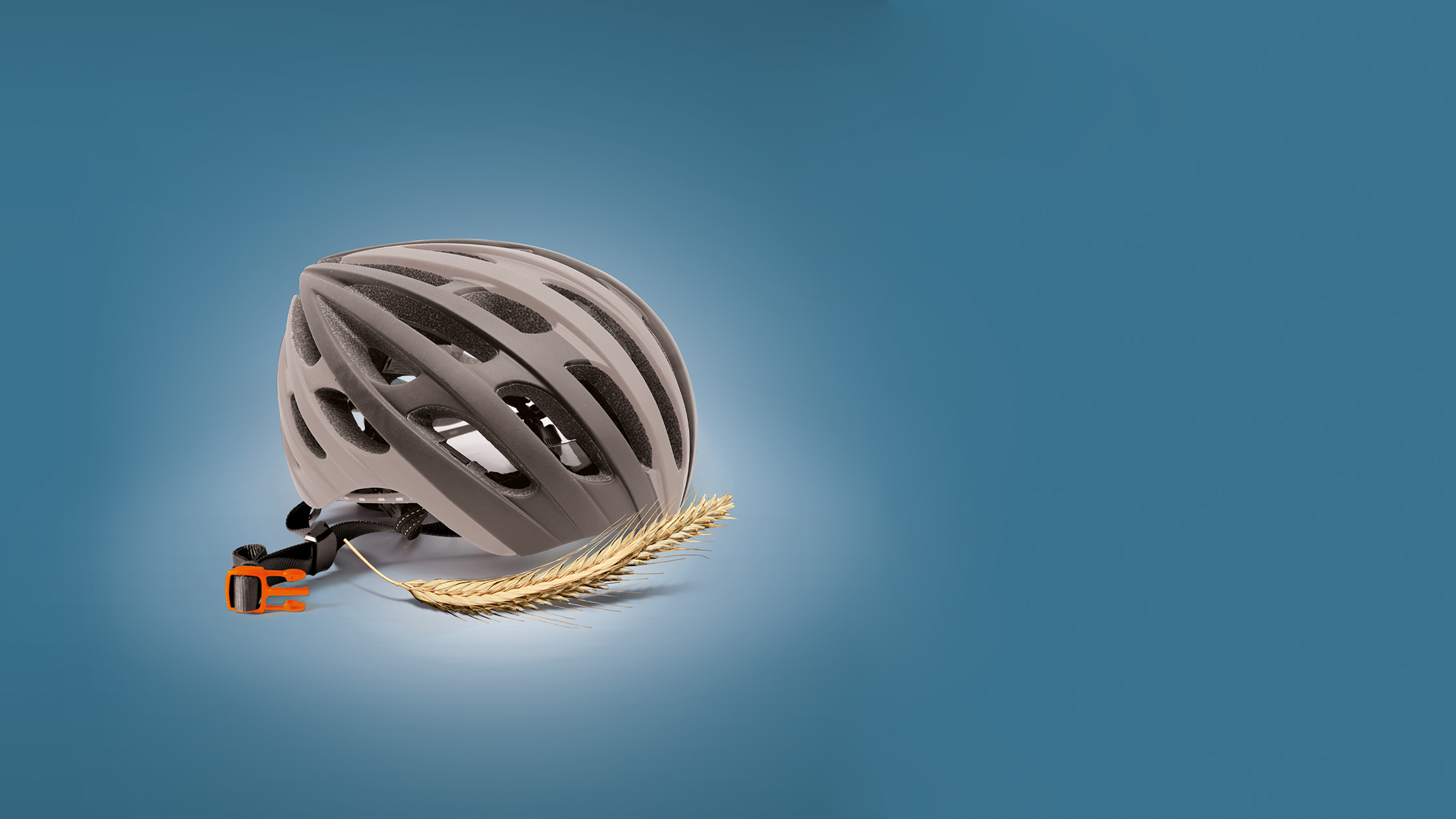Latest hybrid rye varieties from KWS pique growers interest in this versatile crop
Two new varieties of hybrid rye are setting new standards for yield, disease resistance. KWS Tayo and KWS Serafino have quickly become the rye benchmark and are encouraging more growers to explore the potential of this versatile crop. In this article, we hear from KWS researchers and breeders about the development of hybrid rye and how they see the crop’s potential, as well as from an expert in the trade as to the future for this versatile grain.
Once a niche crop with relatively limited appeal, rye is currently enjoying a surge in popularity throughout the world, largely due to the development of new hybrid varieties which have numerous agronomic advantages over their older counterparts and provide significant benefits for growers, according to Dr. Viktor Korzun, Global Lead, Scientific Affairs.
Cultivated rye originated from the Fertile Crescent (Khush 1963). Wild relatives or weedy forms reached Europe probably through a Northern route and remains are present at archaeological sites dated to the late Neolithic in Poland and Romania, to the Bronze Age in Czech Republic, Slovakia and the Ukraine and Iron Age in Germany, Denmark and Crimea (see references in Zohary et al. 2013). Cultivated rye is attracting growing interest from farmers and end-users because the latest hybrids build on the crop’s unique characteristics. Hundreds of thousands of hectares of the latest KWS hybrid rye varieties are now produced on farms in Canada and Minnesota, Europe, and Russia, encompassing the widest possible range of agronomic and climatic conditions. As such, they are helping to future-proof an industry at a time when it is having to cope with a wide range of challenges, from more frequent extremes of weather and increasing legislation which limits growers’ input options.
“Rye can survive extremely cold conditions such as those found in Canada and Russia, where winter temperatures can fall to -35°C,” Dr. Korzun states. “Rye is much more cold-tolerant than wheat and barley which cannot survive below -25°C and -15°C, respectively. The greater ability of rye to withstand extremely low temperatures means that farmers can plant winter rye rather than having to wait until spring to drill a crop when conditions warm up. That alone increases the yield potential by up to 30%. Another key benefit is that rye copes with drought much better than other cereals.
Rye is allogamous, meaning that it reproduces through cross-pollination, which facilitates hybrid breeding and creation of genetic diversity through the recombination of divergent rye genetic resources. This gives rye breeders access to a diverse and exploitable wild gene pool. On the other hand, cross-pollination means that individual genetic traits cannot be fixed as easily as in a self-fertile plant species. Its genome is extremely complex, mainly due to the large number of highly repeated DNA segments and this, combined with rye’s comparatively low economic importance on a global scale, has historically prevented it from attracting the necessary funding from the international research community for de novo sequencing. For those reasons, only recently its genome sequence has been revealed, which represents a major development in exploiting the potential of this exciting crop.”
Farmers can plant winter rye rather than having to wait until spring to drill a crop when conditions warm up. That alone increases the yield potential by up to 30%
Exciting Developments
The maize genome was the first to be sequenced 10 years ago and now 50 genomes of the crop have been sequenced. Similarly, there are 10 high quality sequence genomes of wheat, which at 15.6 Gigabytes (GB) is approximately three times the size of the genome of barley (5.6GB) and double that of rye (7.6GB).
Based on their experiences in decoding the genomes of wheat (IWGSC 2018) and barley (Mascher et al. 2017), an international research team led by the Leibniz Institute of Plant Genetics and Crop Plant Research (IPK) in Gatersleben, Germany decided to create a reference sequence for rye using homozygous seeds (having two identical genes of any given pair on the genome) of line Lo7 from KWS. Dr. Korzun was a member of the team which, in March 2021 announced that, despite the rye genome’s size and complexity, they had succeeded in completely sequencing it (Rabanus-Wallace, M.T., Hackauf, B., Mascher, M. et al. Chromosome-scale genome assembly provides insights into rye biology, evolution and agronomic potential. Nat Genet 53, 564–573 (2021), https://doi.org/10.1038/s41588-021-00807-0).
“Twenty years ago, we could only dream about mapping the rye genome and being in the situation with rye that we are today,” Dr. Korzun states. “Technological developments have brought us to a point where rye has now largely caught up with barley and wheat and is in the middle of the genome research era. More specifically, it will substantially improve our ability to link resistance traits observed in the field with their underlying genes and their location on the rye genome known as mapping. Farmers often ask what genetic mapping means in terms of practical benefits? Perhaps a simple explanation is that this will improve the use of native traits (e.g. resistances and quality characteristics) from rye germplasm for the farmer’s benefit. The new genome sequence will also help us increasing the effectiveness of the development of molecular markers for the selection of important complex traits such as yield. The latter allows us to select the best genetic material before it goes into field trials, rather than having to wait a full crop cycle to see the results. This shortens the development cycle and increases our ability to develop the new, improved varieties much faster. This is a great technical achievement and represents an important step forward towards a more comprehensive genetic characterisation of rye which will considerably enhance breeding progress and therefore the crop’s attractiveness to growers.
The rye research community has profited from the developments and experience accumulated in wheat genomics. In return, rye is used increasingly to develop improved wheat varieties via introgressive hybridization.
Hybrid rye will gain market share in comparison to other crops
“Hybrid rye’s significant agronomic and economic advantages will likely mean that in many countries, including the UK, it will gain significant market shares with respect to other crops,” Dr. Andres Gordillo, Head of Rye Breeding for KWS, states.
“It is an excellent crop for many areas, particularly where light soils and low annual rainfall mean that wheat and barley cannot be grown economically. In part, its potential is due to the combination of the UK’s relatively mild winters and early vigour, so the crop starts to grow early, produces a high number of tillers which maximises photosynthesis. “
“In the UK, 75% of rye is currently used as feedstock for anaerobic digestion (AD) plants, 15% in pig feed and 10% by the flour milling and distilling sectors. However, our view is that this will change significantly soon because the grain’s use in animal feed, primarily for the monogastric sector, will expand significantly as more producers recognise the clear advantages of including rye in rations. That will open up new markets and the additional demand will significantly increase the rye cultivation area.“
Setting new standards
KWS Tayo and KWS Serafino are leading developments in hybrid rye with two excellent new varieties which set the benchmark.
KWS Tayo, a brand-new addition to the KWS hybrid rye line-up for 2020/21, has quickly become the reference point for this sector in most countries. One of the new-generation KWS PollenPlus hybrids, it has a 5% yield advantage over KWS Serafino and outyields older varieties of hybrid rye by up to 10%. This massive advantage is underscored by excellent agronomic characteristics, including stiffer straw, and excellent plant health.
KWS Serafino is a multi-purpose PollenPlus hybrid which can be used for AD, to produce grain for animal feed or by the food sector for flour, breakfast cereals and distilling/malt. It produces stable, high yields across years, with excellent Hagberg (HFN) and sample quality. Despite exceptional grain and straw yields, and KWS Serafino has low growing costs, and its’ grain is excellent for pig finishing or cattle rations.
KWS Serafino also provides among hybrids in the UK rye market the highest level of tolerance to ergot through its a patented, non-GM PollenPlus technology. Ergot, a fungus which forms an elongated, grain-like structures (sclerotia) on the plant, is a potential hazard connected to the consumption of cereals in human food or animal feed products. These ergot bodies contain alkaloids which can harm humans and animals, which is why there are official limits on their content in harvested goods.
Currently, the EU ergot threshold for food is 0.5g/kg ergot in the harvest ware and 500 µg/kg for ergot alkaloids, while for feed the limit is 1g/kg. However, further reductions in ergot and alkaloid thresholds for food are likely to be implemented in 2023, as well as new recommended limits for feed in the near future. This is highly significant because feed already accounts for around two-thirds of the market for rye in countries such as Germany, Poland and Denmark.
It is an excellent crop for many areas, particularly where light soils and low annual rainfall mean that wheat and barley cannot be grown economically.
Higher level resistance
The hybrid system in rye is based on cytoplasmic male sterility (CMS) and the genes to restore pollen shedding
The discovery of plant genetic resources with CMS made the first developments of hybrids via targeted crossing between male sterile (CMS) female parents and male fertile parents possible via wind pollination and, therefore, in a cost-effective way. CMS is a condition under which a plant is unable to produce functional pollen. These genotypes can therefore not pollinate other plants but are used as seed parents of hybrids.
In cooperation with researchers from the University of Hohenheim, the Leibniz Institute of Plant Genetics and Crop Plant Research (IPK), and the Julius Kühn Institute (JKI) - the Federal Research Centre for Cultivated Plants in Germany - KWS breeders were able to identify an Iranian landrace (genetic resource) that carries a gene (Rfp1) which leads to full restoration of pollen-shedding of CMS plants in the offspring (hybrid). This significantly improves pollen shedding and, therefore, fast closure of glumes, which prevents ergot spores from entering rye spikelets. Consequently, susceptibility to ergot is substantially reduced. Further research involved the dissection of the Rfp1 gene region and its transfer into elite rye germplasm. The latter lead to PollenPlus technology that is integrated in all current rye hybrids of KWS.
To produce seed for high-yielding KWS hybrid varieties the seed and pollen parentsare crossed with each other. Only the pollen parent carries the completely dominant restorer gene Rfp1, so progeny from crossing the seed and pollen parents (F1 generation) become fertile.
Modern day genetics allow rye to ‘escape’ the risk of ergot contamination via surplus pollen production, when combined with correct agronomic practice. Total resistance is not available in any region of the world, so proactive crop management implementing all cultural control measures will be the key to minimising ergot risks.
“KWS believes the investment in F1 PollenPlus hybrids allows for high ergot tolerance. This, in combination with a high yield performance, benefits both farmers and end users,” Dr. Andres Gordillo adds. “In all countries we are working to improve lodging tolerance with the target of eliminating the need to use Plant Growth Regulators on the crop in the near future. Looking ahead to 2030, it is probably that we will have a portfolio of hybrid varieties for different geographic regions which are even shorter and have even better ergot resistance, while ensuring our annual genetic gains for grain yield”
Hybrid rye has significant potential
“Frontier Agriculture Ltd. has been involved with hybrid rye for many years and has great experience with the crop, both for grain and AD. Given the benefits of the latest hybrid varieties, we believe that it has significant potential for the future,” Chris Piggott, Regional Seed Manager at Sandy, Bedfordshire, states:
“The market for milling rye was well established but developed further with the requirement for wholecrop rye as a feedstock for AD plants. Demand from that sector has plateaued, but now we are seeing increased interest in growing it for grain from farmers who clearly see value in having another cereal in their rotation as an alternative to wheat and barley. This is especially true on lighter soils where growers often struggle to achieve consistent yields from traditional cereal crops because of increasingly variable weather patterns.
“Having an alternative provides them with greater flexibility in terms of managing farms and rotations at a time when there are obvious challenges with other cereals, as well as break crops such as oilseed rape and sugar beet. The increasing interest in growing hybrid rye is understandable because it provides significant agronomic benefits. Rye’s deeper, stronger root structure allow it to scavenge water and nutrients very efficiently, so it allows for better water and nutrient use efficiency. It is also an extremely healthy crop which requires significantly lower levels of inputs, such as insecticides and fungicides.
“To help develop the market for hybrid rye we have been working closely with potential end-users, including ABN, a leading British manufacturer of pig and poultry feeds, to ensure that it can be included in their rations. The project has been running for two years and considers all the factors involved, from logistics and storage to ensuring that feeds meet the physical and nutritional requirements.
“Having good buy-in is essential to ensure that hybrid rye works for all stakeholders, from growers and the trade to the feed industry and other end-users. Frontier’s involvement is designed to facilitate that and our investment in these areas will help to bring about a significant increase in the UK rye area.
Significant advantages
“New varieties such as KWS Tayo play a key role in achieving that goal, so we are excited about its advantages and market potential. Compared with the older hybrids, its large ear size and high grain and wholecrop yields will be attractive for both existing and potential markets.
“Almost any new variety generally has some downside, but in our trials with KWS Tayo over the last two years we have seen no compromises or negatives, whether in bushel weight or yield, lodging or maturity.
Hybrid rye’s greater yield stability, combined with lower input requirements mean that it has an important role in reducing risk, particularly in a second cereal situation. Risk is often overlooked, but there is no doubt that it is becoming an increasingly important factor for farming businesses, because the last two seasons have demonstrated clearly that not every aspect of the season can be controlled.
“Straw stiffness and the crop’s standing power are incredibly important aspects of any cereal but particularly so in the case of rye because of its greater length of straw. In Frontier’s own trials with KWS Tayo we have not seen any issues on that score, which is very encouraging.“
“Another key benefit of this variety is that its PollenPlus technology provides effective protection against ergot and significantly reduces the risk compared with competitor hybrids, which is crucial in terms of expanding the market. Depending on the level of ergot in a sample there are ways around it, with colour sorting being extremely effective, but given the choice one would rather avoid the time, cost, and complication of dealing with ergot that way.
“There’s a lot of interest in growing KWS Tayo because of its significantly higher yield over older hybrid varieties, with no compromises. Demand is coming from farmers all over the UK, including in the North of England and Scotland, because it fits the requirements of both the grain and AD markets so well. Most rye growers will be interested in KWS Tayo and we expect a significant increase in demand for seed next season, but we have a lot in the ground and should be able to accommodate any uptick in demand.
“We are working hard to keep the cost of seed as close as possible to existing varieties because it is an important factor in getting farmers on board with the latest genetics. However, the yield difference between KWS Tayo and older rye varieties is so great that it is unlikely to be a factor.
“With all the talk of Net Zero, something worth highlighting is that KWS Tayo reduces the amounts of seed, fertiliser, handling, transport, packaging, time and energy involved in growing the crop compared to other crops. Combine that with its significantly higher yield and the amount of carbon per tonne of yield is significantly reduced. These factors play an important role in producing crops efficiently and their importance will increase going forward.”
Your consultants









